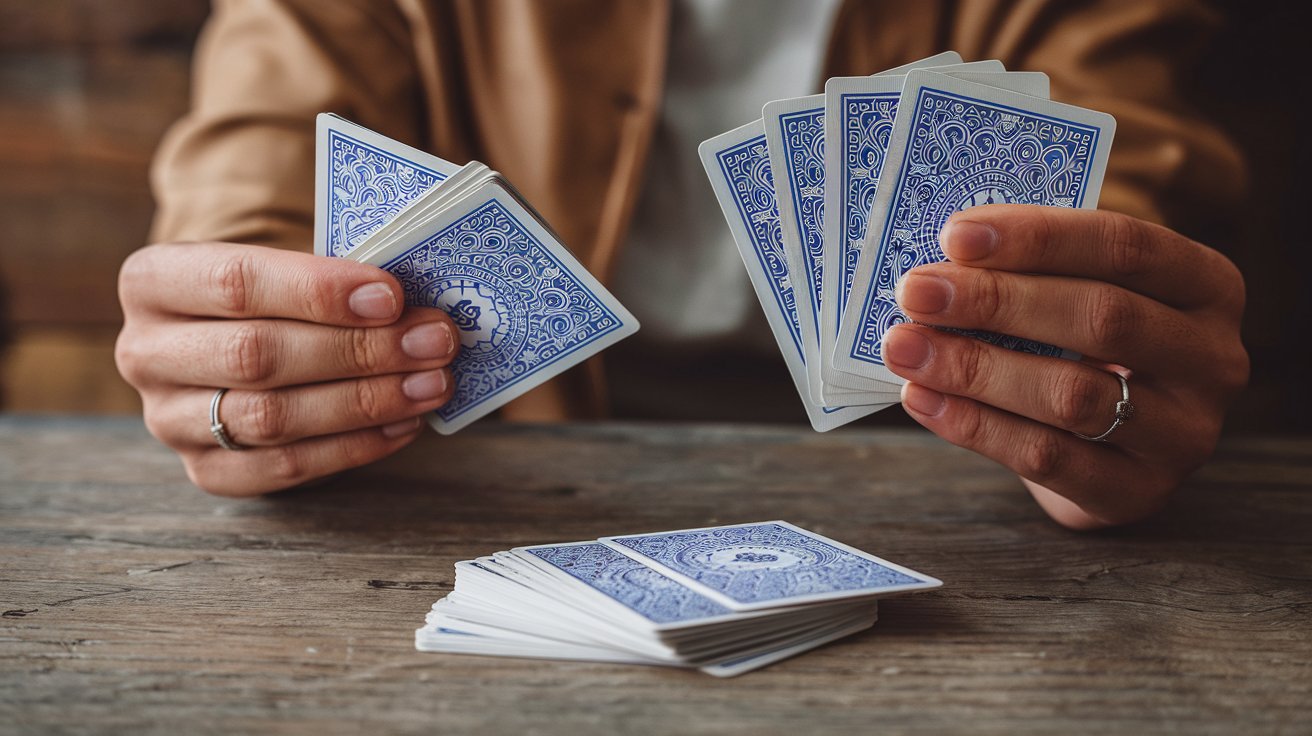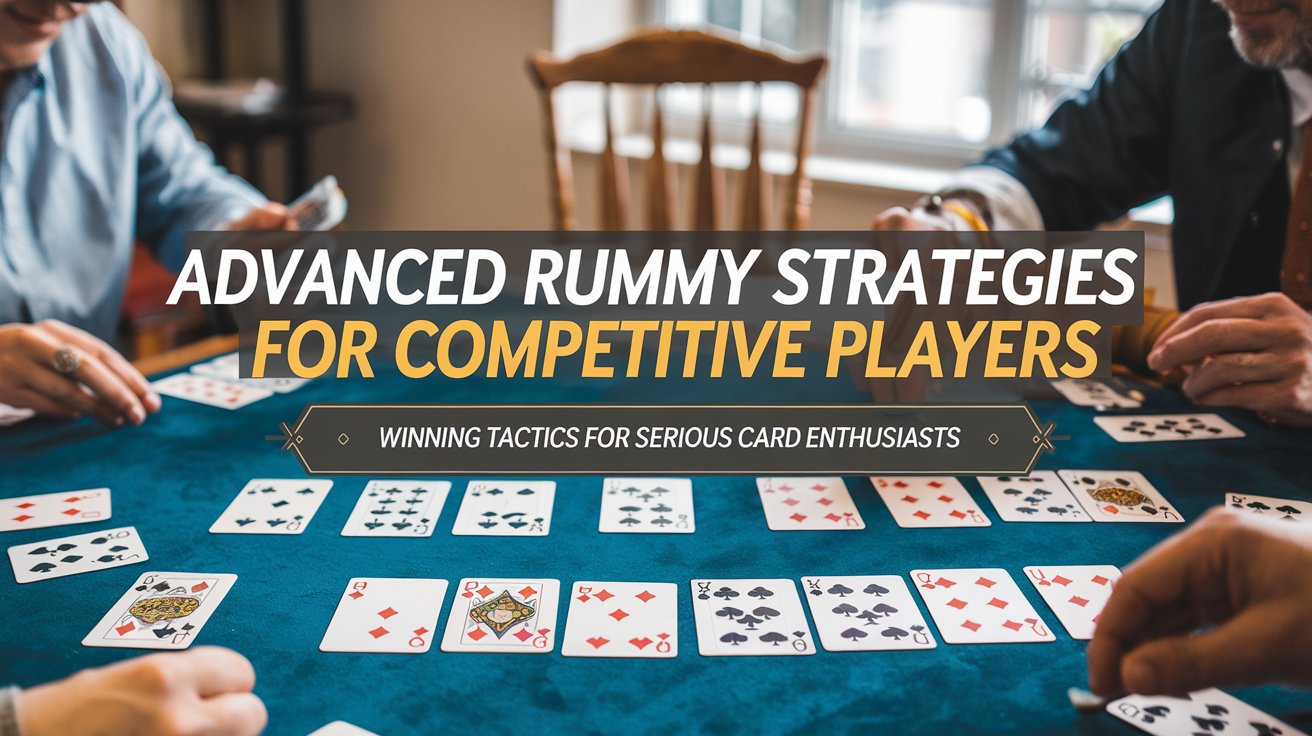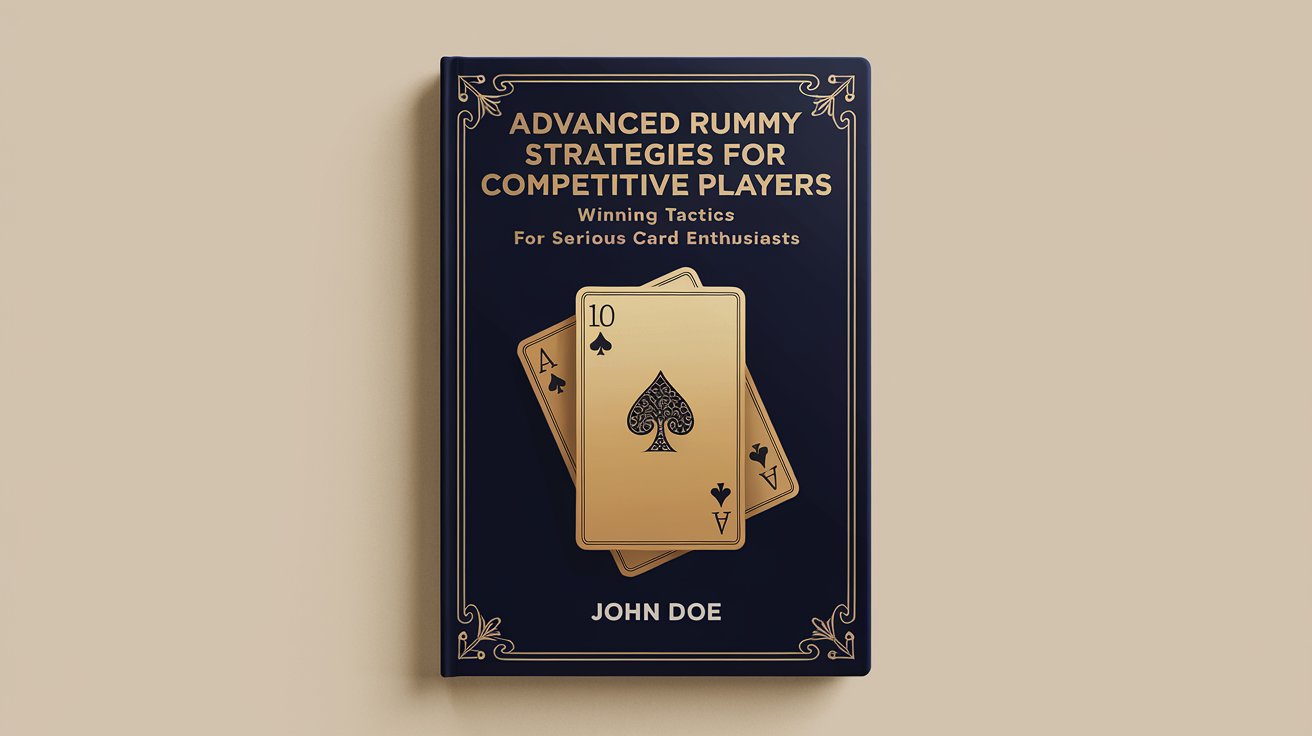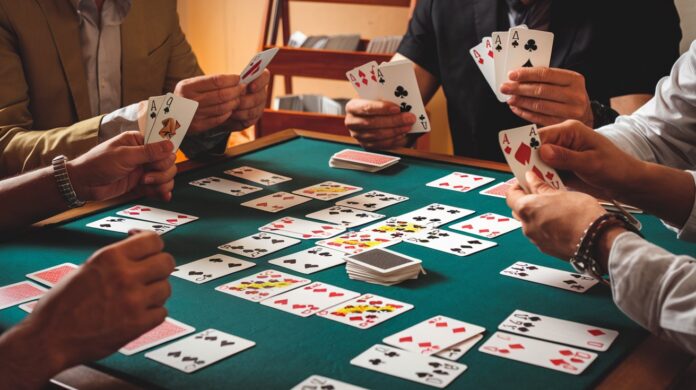Rummy isn’t just a casual card game played around kitchen tables—it’s a strategic battle of wits that rewards skillful play, careful observation, and tactical decision-making. For competitive players looking to elevate their game beyond the basics, understanding advanced strategies is essential to consistently outperform opponents.
Whether you’re preparing for tournaments, high-stakes games, or simply want to dominate your regular Rummy circle, this comprehensive guide will equip you with sophisticated techniques that separate amateur players from true masters of the game. We’ll explore cutting-edge approaches to hand management, opponent reading, mathematical optimization, and psychological gameplay that can transform your Rummy performance.
The Psychology of Competitive Rummy

Reading Your Opponents
The most successful Rummy players aren’t just playing their own hands—they’re playing against their opponents’ minds. Developing the ability to read opponents gives you a tremendous competitive advantage:
- Track hesitation patterns: Notice when opponents pause before drawing or discarding. These micro-delays often indicate decision points that reveal information about their hand composition.
- Monitor card organization: Observe how opponents arrange and rearrange cards after picking from the deck or discard pile. Players often unconsciously group cards that form potential melds.
- Analyze discard patterns: Look for consistency in the types of cards your opponents discard. Do they avoid certain suits or values? This can reveal their melding strategy.
- Identify protective behaviors: Notice when opponents hold cards they would normally discard, which often indicates they’re denying you cards they believe you need.
Psychological Tactics and Misdirection
Competitive Rummy involves strategic deception:
- False tells: Occasionally display interest in cards you don’t actually need, or show disappointment when drawing a card that completes a crucial meld.
- Rhythmic disruption: Establish a consistent pace of play, then deliberately break it at strategic moments to create uncertainty.
- Selective information: In games where showing melds is optional until the end, strategically reveal or conceal melds to manipulate opponents’ perceptions of your progress.
- Confidence projection: Regardless of your actual position, maintain a consistent demeanor to prevent opponents from gauging your hand strength.
Mathematical Optimization in Rummy

Probability-Driven Decision Making
Elite Rummy players leverage probability calculations to inform every decision:
- Card counting fundamentals: Track cards that have been discarded and melded (when visible) to calculate the likelihood of drawing needed cards.
- Probability thresholds: Establish personal thresholds for when to hold versus discard potential meld cards. For example, if the probability of completing a sequence falls below 30%, consider abandoning it for more promising opportunities.
- Expected value calculations: When facing multiple potential meld pathways, calculate the expected point value of each approach, factoring in completion probability and resulting hand reduction.
- Opportunity cost assessment: Evaluate not just what a card might help you build, but what you’re giving up by keeping it. Every card held represents an opportunity cost.
Optimal Drawing Strategy
Your drawing decisions should be guided by mathematical principles:
- Deck versus discard evaluation: Calculate the probability of finding useful cards in the deck versus the known card in the discard pile.
- Multi-purpose draw targets: Prioritize drawing cards that could potentially complete multiple different melds, maximizing flexibility.
- Diminishing returns awareness: Recognize when additional cards of a certain type provide reduced value due to existing melds or discards.
- Risk-adjusted drawing: As your hand nears completion, your drawing strategy should become increasingly conservative, focusing on guaranteed improvements rather than speculative ones.
Advanced Hand Management Techniques
Strategic Melding Decisions
Knowing when to meld is as important as knowing how:
- Delayed melding: Keep completed melds in hand when revealing them would give opponents valuable information about your strategy.
- Accelerated melding: Lay down melds earlier than necessary when playing defensively to reduce potential point liability.
- Flexible meld construction: Build your hand to allow for multiple possible final configurations, rather than committing to a single path too early.
- Dead-end prevention: Constantly evaluate whether your current melding pathway could lead to an unwinnable position with stranded high-value cards.
Card Retention Hierarchy
Not all cards are created equal. Develop a dynamic hierarchy for which cards to keep:
- Connector cards: Cards that bridge multiple potential sequences (like a 7 that could complete both 5-6-7 and 7-8-9) deserve priority protection.
- Multi-function cards: Prioritize cards that could form either sequences or sets depending on future draws.
- Pure vs. impure sequence components: In games that distinguish between pure and impure sequences, weigh the strategic value of each type.
- High-value defensive holds: Sometimes retaining a high-value card your opponent needs is worth more than using it in your own potential meld.
The Art of Discarding
Strategic discarding separates masters from novices:
- Safe discards: Identify and prioritize discarding cards that are least likely to help opponents, based on observed drawing and discarding patterns.
- Defensive discards: When possible, discard cards that block opponent’s potential melds rather than simply focusing on improving your own hand.
- Timing-based discards: Save discards that benefit the next player until they’ve already drawn, forcing them to wait a full round to utilize them.
- Value-based progression: Begin by discarding medium-value cards, saving both low-value connectors and high-value cards for strategic moments later in the hand.
Advanced Tactical Maneuvers

The Bait and Switch
This advanced technique involves deliberately creating the impression you’re building certain melds, only to pursue entirely different combinations:
- Show interest in cards that suggest a particular strategy
- Encourage opponents to discard cards that support your actual hidden strategy
- Maintain the deception until you can complete your genuine melds in rapid succession
The Block and Release
This defensive-offensive combination maximizes disruption:
- Identify and hold cards critical to opponents’ strategies
- Wait until opponents commit to alternative approaches
- Strategically release blocked cards when they no longer fit opponents’ revised strategies
- Use the newly freed space in your hand to accelerate your own melding
The Sacrifice Play
Sometimes strategic sacrifice of opportunity leads to greater advantage:
- Deliberately discard a card that could potentially help your hand
- Observe as opponents adjust their strategies to incorporate this unexpected opportunity
- Use their strategic shift to open new opportunities or to discard cards they now won’t expect you to need
The End-Game Acceleration
As the hand progresses toward conclusion, shift to this approach:
- Rapidly reduce hand point value even at the expense of potential melds
- Create pressure by visibly nearing completion
- Force opponents into increasingly risky decisions as they try to match your pace
- Capitalize on the errors that result from their accelerated play
Competitive Tournament Strategies
Energy Management
Tournaments require sustained concentration across multiple games:
- Selective focus: Conserve mental energy by identifying the most critical decision points in each hand and concentrating your analytical efforts there.
- Between-game recovery: Develop a routine for mental refreshment between hands to maintain peak performance throughout lengthy tournaments.
- Opponent-specific attention: Allocate more observation energy to stronger opponents while playing more standardized strategies against weaker players.
- Stress regulation: Practice techniques to maintain optimal arousal levels—neither too relaxed nor too tense—throughout competitive play.
Score Management Across Multiple Hands
Tournament success requires thinking beyond the current hand:
- Strategic loss minimization: When a winning position seems unlikely, shift focus to minimizing point loss rather than pursuing risky win attempts.
- Point gap awareness: Adjust aggression based on tournament standing—take more risks when trailing, play more conservatively when leading.
- Opponent targeting: In multi-player tournaments, strategically focus efforts on disrupting the strongest competitors or those closest to you in rankings.
- Time management: Adjust your playing pace based on tournament time constraints, ensuring sufficient time for careful play in later, potentially decisive hands.
Adaptation to Rule Variations
Competitive players must master multiple Rummy variants:
- Rule-specific optimization: Develop specialized strategies for different rule sets (Indian Rummy, Gin Rummy, Canasta, etc.).
- Point system adaptation: Adjust card retention strategy based on the specific point values of the variant being played.
- Joker utilization: In games featuring jokers or wildcards, develop specialized strategies for their optimal employment.
- Declaration requirements: Adjust melding and discarding strategy based on the specific requirements for going out or declaring.
Technical Skill Development
Hand Efficiency Metrics
Evaluate your play using quantitative measures:
- Melding speed: Track the number of turns required to form your first meld and compare across games to identify improvement.
- Dead card percentage: Calculate what percentage of your hand consists of cards not currently contributing to potential melds.
- Conversion rate: Measure how efficiently you transform drawing opportunities into completed melds.
- Point liability reduction: Track how quickly you reduce your hand’s potential point liability across the duration of each hand.
Deliberate Practice Techniques
Improve systematically rather than through casual play:
- Situation drills: Practice specific challenging scenarios repeatedly rather than always playing full games.
- Post-game analysis: Review completed games to identify missed opportunities and decision errors.
- Playing against superior opponents: Seek out stronger players specifically to expose weaknesses in your strategy.
- Targeted skill development: Identify your weakest technical areas and create focused exercises to address them.
The Mental Game of Competitive Rummy
Emotional Regulation
Maintaining composure is critical to sustained success:
- Tilt prevention: Develop strategies to recover quickly from “bad beat” hands where luck works against sound strategy.
- Overconfidence management: Remain vigilant against the tendency to play less carefully when on a winning streak.
- Focus restoration: Create personal techniques to regain concentration after distractions or between hands.
- Performance anxiety management: Practice techniques to handle the pressure of high-stakes situations without compromising decision quality.
Growth Mindset Application
The most successful competitive players approach the game as a continual learning opportunity:
- Loss analysis: View losses as valuable data rather than failures, extracting specific lessons from each.
- Strategy evolution: Regularly reassess and refine your core strategies rather than becoming rigid in your approach.
- Community engagement: Participate in Rummy forums, discussions, and analysis groups to expose yourself to diverse perspectives.
- Selective innovation: While respecting fundamental principles, experiment with novel approaches in controlled settings to potentially discover advantageous new techniques.
Conclusion
Mastering competitive Rummy requires a multifaceted approach that combines psychological acuity, mathematical precision, technical skill, and emotional regulation. The strategies outlined in this guide provide a framework for elevating your play from casual competence to competitive excellence.
Remember that becoming a truly formidable Rummy player is an ongoing journey rather than a destination. The most successful competitors continuously refine their understanding of the game, adapt to changing opponents and conditions, and maintain a balanced approach that honors both the science and art of Rummy.
By incorporating these advanced strategies into your play while developing your own stylistic adaptations, you’ll be well-positioned to succeed in competitive environments and experience the deep satisfaction that comes from playing this classic card game at its highest levels.
Whether you’re aiming for tournament success or simply want to dominate your regular game night, the techniques in this guide will serve as valuable tools in your journey toward Rummy mastery. Shuffle up, deal, and apply these strategies to transform your competitive results!

Zareb Saleh is a journalist at Gulf Today and a ghostwriter for Gameoholic, specializing in gaming, technology, and digital culture. With a keen eye for industry trends, he delivers insightful stories that engage and inform readers.




